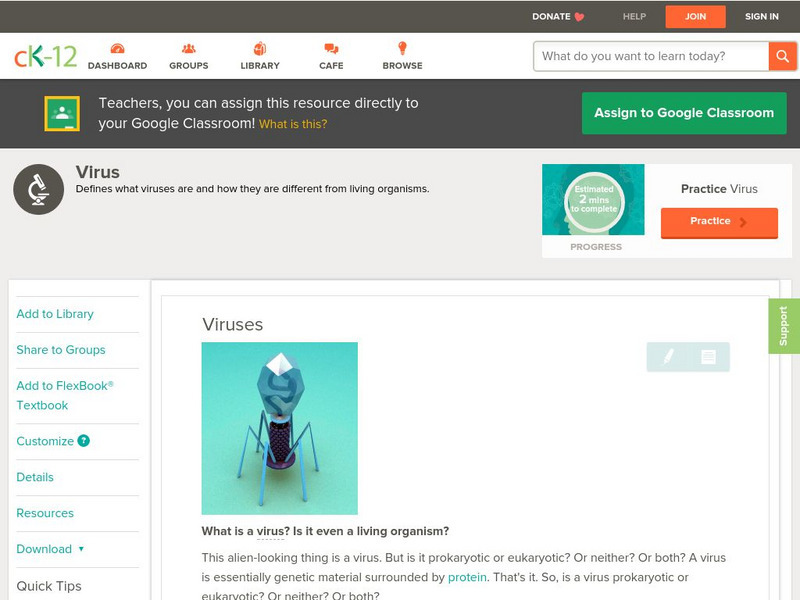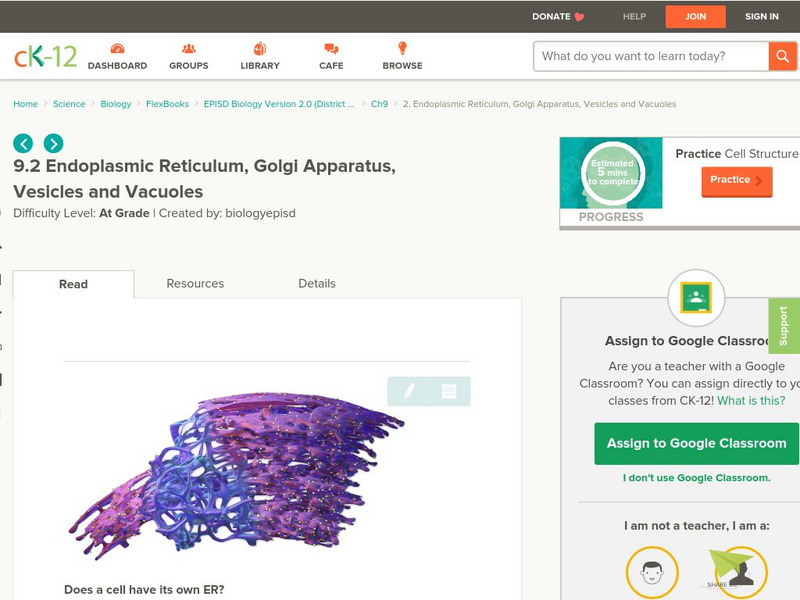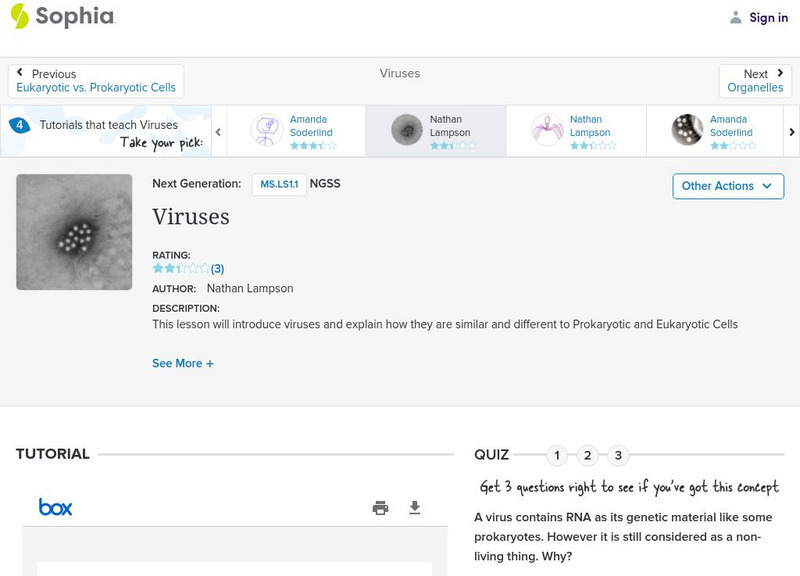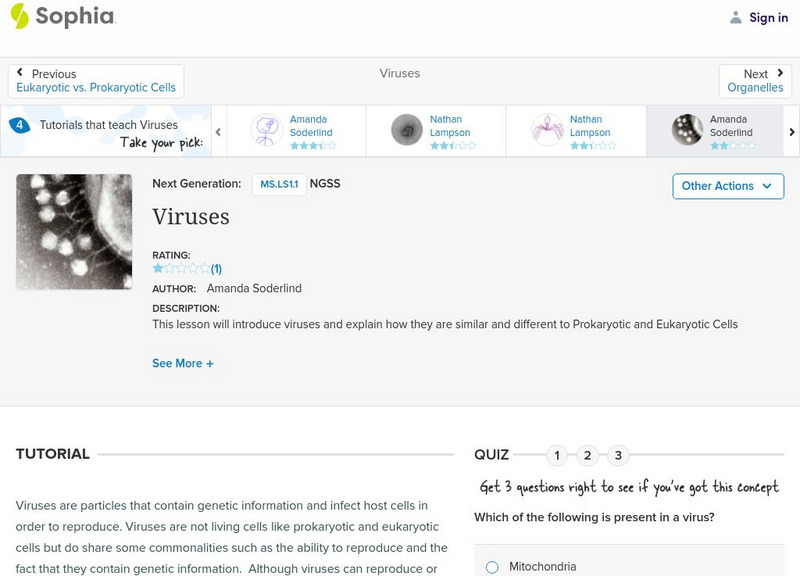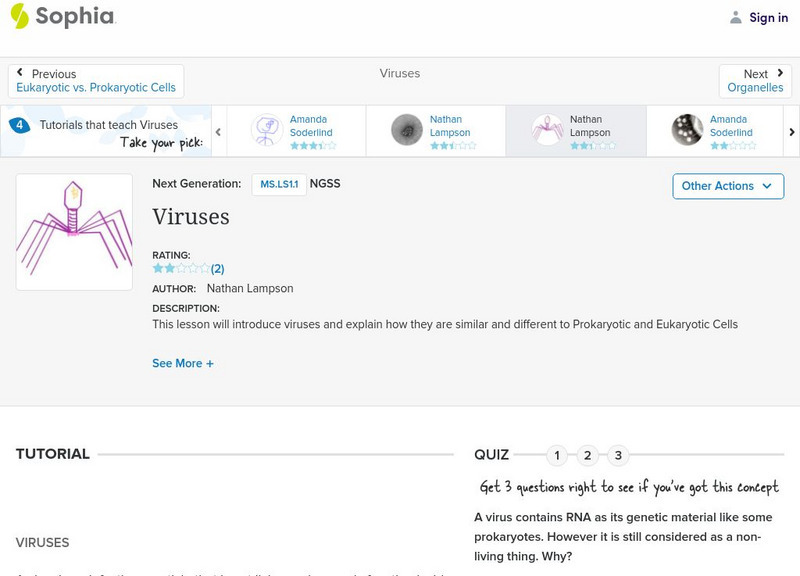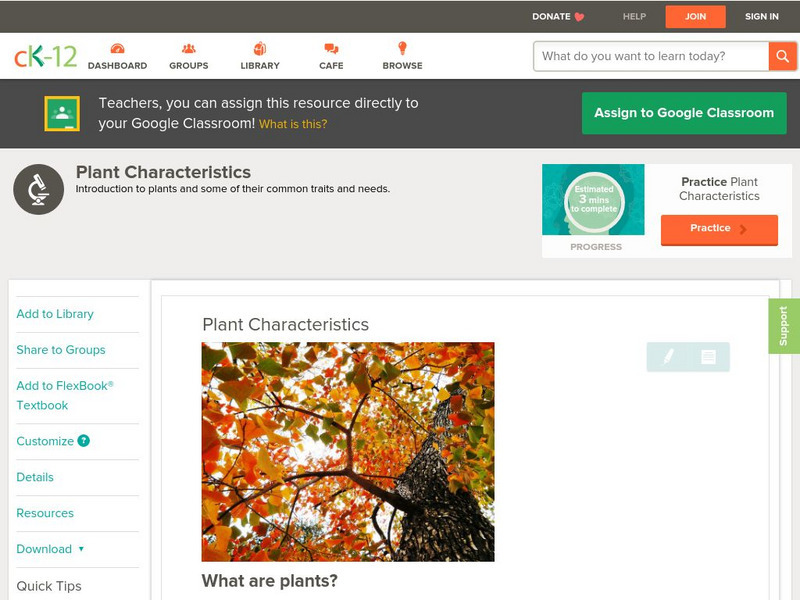Hi, what do you want to do?
Texas Instruments
Texas Instruments: Energetics (Photosynthesis and Respiration)
This assessment is designed to assess the student's comprehension of a basic function for eukaryotic cells.
National Institute of Educational Technologies and Teacher Training (Spain)
Ministerio De Educacion: Microbiologia 2 Bachillerato
This unit will allow you to have a broader idea about microorganism, people and the ecosystem. It contains 16 interactive activities.
CK-12 Foundation
Ck 12: Biology: Viruses
[Free Registration/Login may be required to access all resource tools.] Introduction to the properties of viruses.
Biology Pages
Kimball's Biology Pages: Dna Replication
This page provides a fairly high level explanation of DNA replication with extensive graphics. Good description of this process.
Khan Academy
Khan Academy: Nucleus and Ribosomes
Discussion in detail of the structure and function of the nucleus and ribosomes of a cell and how they work together in the production of proteins.
Sophia Learning
Sophia: Nucleus
Learn the basic structure and function of the nucleus, or the control center of a eukaryotic cell.
BiologyWise
Biology Wise: Unicellular Organisms
A unicellular organism is made of only a single cell. Its characteristics are described and several examples are provided.
BiologyWise
Biology Wise: Rough Endoplasmic Reticulum
The endoplasmic reticulum is found in eukaryotic cells and has three layers. Proteins are synthesized in the rough endoplasmic reticulum and its structure and functions are described here.
Cosmo Learning
Cosmo Learning: Video: Mitosis in Real Time
Can you identify the steps of mitosis in this video? The video shows the process of the nucleus of a eukaryotic cell dividing in real time. [0:19]
BiologyWise
Biology Wise: Multicellular vs. Unicellular Organisms
Describes the characteristics of unicellular and multicellular organisms and gives examples for each.
BiologyWise
Biology Wise: Types of Protists
Explains what types of organisms are in the kingdom Protista and describes the different types of protists in five broad categories and in their sub-categories.
BiologyWise
Biology Wise: What Is the Nucleolus?
The characteristics, structure, and functions of the nucleolus are described.
BiologyWise
Biology Wise: Three Domains of Life
Describes the characteristics of Archaea, Bacteria, and Eukarya, the three domains of life.
CK-12 Foundation
Ck 12: Biology: Earth Forms and Life Begins Study Guide
This comprehensive study guide covers the main terms and concepts needed for a unit on the origin of life.
Famous Scientists
Famous Scientists: Lynn Margulis
Read the biography of Lynn Margulis in this article. Learn how her endosymbiotic theory of eukaryotic cell development revolutionized our understanding of the origin of life.
CK-12 Foundation
Ck 12: Life Science: Timeline of Evolution
[Free Registration/Login may be required to access all resource tools.] For life to evolve from simple single-celled organisms to many millions of species of prokaryotic species to simple eukaryotic species to all the protists, fungi,...
BiologyWise
Biology Wise: Products of Glycolysis
Explains what happens during glycolysis in eukaryotic cells, what the products are, their composition, and their properties.
BiologyWise
Biology Wise: Cytoplasm: The Functions of the Building Blocks of Life
Describes what cytoplasm is and its functions in regulating cellular processes.
CK-12 Foundation
Ck 12: Endoplasmic Reticulum, Golgi Apparatus, Vesicles and Vacuoles
[Free Registration/Login may be required to access all resource tools.] Overview of the structure and role of the endoplasmic reticulum, Golgi apparatus, vesicle, vacuole, and centriole. This tutorial also helps students distinguish...
Sophia Learning
Sophia: Viruses: Lesson 3
This lesson will introduce viruses and explain how they are similar and different to Prokaryotic and Eukaryotic Cells. It is 3 of 4 in the series titled "Viruses."
Sophia Learning
Sophia: Viruses: Lesson 4
This lesson will introduce viruses and explain how they are similar and different to Prokaryotic and Eukaryotic Cells. It is 4 of 4 in the series titled "Viruses."
Sophia Learning
Sophia: Viruses: Lesson 1
This lesson will introduce viruses and explain how they are similar and different to Prokaryotic and Eukaryotic Cells. It is 1 of 4 in the series titled "Viruses."
BiologyWise
Biology Wise: Classification of Amoeba (Ameba)
Describes the characteristics of amoeba and their classification.
CK-12 Foundation
Ck 12: Biology: Plant Characteristics
[Free Registration/Login may be required to access all resource tools.] Introduction to plants and some of their common traits and needs.







